
Follow us




Partners | ||
 |
 |
 |
 |
 |
 |
 |
 | |
Associated partners | ||
 |
 |
 |
 | ||
With the support of the Culture Programme of the European Union
Graphic design : kidnap your designer / Development : bien à vous
JULY 2013
WHEN? 7 - 12 July
WHERE? Boda Glassbruk (SE)
PARTNER? The Glass Factory, Glasmuseet I Boda
In the 1960s and 70s Boda teamed up with life and creativity. This was the place where Boda Smithy, Boda Wood and Boda Nova were founded. But, above all, glass was given new and unique shapes by legends such as Erik Höglund, Signe Persson-Melin, Monica Backström, Rolf Sinnemark and Kjell Engman.
In 2009 the Municipality of Emmaboda secured the extensive historical glass collections from Boda, Kosta and Ă fors glassworks. Boda, where such great creativity has flourished, is the location of The Glass Factory â one of Scandinaviaâs largest glass museums.The Glass Factory is an experience-based, interactive glass museum with a quality-assured operation located in the heart of the Kingdom of Crystal.
The museum serves as a knowledge centre and creative meeting place for artists, designers and visitors.



Linked files
GIT-II-BODA-Press-Release-BDDEF.pdf (pdf)
Pia WĂŒstenberg

Pia WĂŒstenberg (GB)
www.piadesign.eu/piadesign.eu/Front_page.html
Transformed Stacking Vessel

Transformed Stacking Vessel


Nathalie Dewez

Nathalie Dewez (BE)
www.n-d.be
Nathalie Dewez Petit H Porcelein/leather hangers

Nathalie Dewez Petit H Crystal vases - Porcelein/ leather fans

Dina BaĂŻtassova

Matti Klenell

Matti Klenell (SE)
www.mattiklenell.com
Matti Klenell, Thieving Bird, 2010

Matti Klenell, Thieving Bird 2010

Matti Klenell, Ajeto Urns, 2008

Matti Klenell, Kokeshi vase, 2011

Camille Roger

Camille Roger (FR)

Farine Glaciaire, 2013

Farine Glaciaire, 2013

Anthropogical Landscape, 2013

Farine Glaciaire, 2013

Jeremy Wintrebert

Jeremy Wintrebert (FR)
www.jeremyglass.com
Void, Jeremy Wintrebert, 2011

Big, detail
© Jeremy Maxwell Wintrebert

Spirit
© Jeremy Maxwell Wintrebert

Petale Lamp
© Claude Weber

Liquid
© Jeremy Maxwell Wintrebert

Eino MÀkelÀ

Fredrik Nielsen

Fredrik Nielsen (SE)
www.wetterlinggallery.com/artists/fredrik-nielsen
Frederick Nielsen, Ferrari Pitcher
Frederick Nielsen, Bild

Vanessa Royant
Simon Kashmir Holm
THEME: âMixed Mediaâ
Boda glassworks has been the Swedish glasshouse where the designers went wild and had all the freedom to experiment as they wished in the 1950s, 60ÂŽs and 70ÂŽ, which made the glasshouse flourish more than any other glasshouse in the Swedish Kingdom of Crystal.
In Boda a tradition of experimenting with mixed media has long been existing. When the artist and designer Erik Höglund came to the Boda Glasworks in 1953 he paved the way for a young, new generation of designers who started questioning the traditional norm of how glass should look and how it should be designed.
In Boda the glass designers worked with wood and metal, combining different materials for a young new clientele by taking into account that the Swedish society had changed dramatically.
Today the Swedish Kingdom of Crystal is rapidly changing and new ideas for production are necessary to be an input for the new development of glass.
Workshop 2
Domaine de Boisbuchet/ CIRECA with the GlassLabâą of The Corning Museum of Glass (FR)
8-14/9/2013
WHEN? 8-14 September
WHERE? Domaine de Boisbuchet (FR)
PARTNER? CIRECA (Centre International de Recherche et dâEducation Culturelle et Agricole) with The Corning Museum of Glass and the GlassLabâą tutoring by Paul Haigh
Le Domaine de Boisbuchet was first mentioned in documents dating from the the 16th century, it was long the largest country estate in the area, last in the possession of the Counts of Le Camus. In 1986, the furniture collector and culture manager Alexander von Vegesack purchased the estate, to bring it to new life for agricultural and cultural purposes.
Together with friends and Eastern European universities, the buildings were renovated and agricultural operations were reactivated. In 1996, the organisation CIRECA (Centre International de Recherche et dâEducation Culturelle et Agricole) was founded, which has since put on a series of international workshops in the summer months on architecture and design themes.
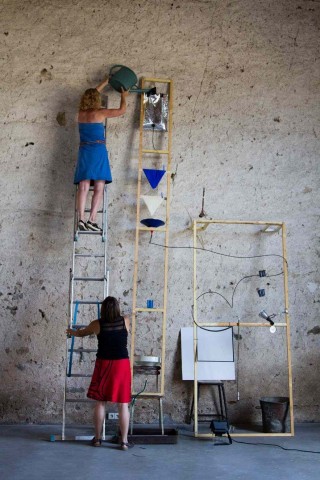
Up until the French Revolution, a Medieval castle stood on the site of the current manor house. According to legend, it was connected by underground passageway to the Absac property on the other side of the Vienne River. Remnants of the tunnel are still evident today.
Architect, designer and tutor Paul Haigh and The GlassLabâą return to Boisbuchet for a glass design exploration workshop focusing on the ephemeral and sublime qualities of glass as a rich palette for innovation and intervention. Emphasis will be placed on the idea of â...glass as a liquidâ in exploring a material that can transform process into poetry.
Working with expert glassmakers from The Corning Museum of Glass, the participants will explore and develop individual ideas to fabricate glass concepts at multiple scales from fashion to furniture, from artifact to architecture. Each new design will be fabricated through multiple prototypes utilizing the processes offered, including pipe blowing, fusing, hand pressing and glass sheet forming. The participants will examine glass making as an art form that offers a multitude of methods appropriate for today's design tasks.

Linked files
Liquid Fusion at Boisbuchet by Paul Haigh for CMoG (pdf)GIT-II-BOISBUCHET-Press-Release-BDDEF.pdf (pdf)

Claire Baldeck

Louis Thompson

Terese William Waenerlund

Terese William Waenerlund (SE)
www.teresewilliam.com
"Table with Tablecloth" with video projection, 2013

"Weave", 2013

Stéphane Halmaï-Voisard

David Hanauer

David Hanauer (DE)
www.davidhanauer.de
"Jeanne d'Arc", 2009

"WorldWilde carpet", 2011

"Superflux", 2009

Jeanne gautier

Flavie Audi

Flavie Audi (FR)
flavieaudi.com
Disturbed Edges, Cube series 03, 2012

Disturbed Edges, Circles Series 05, 2012

Disturbed Edges, Circles Series 06, 2012

Edgelessness, 2012
THEME: âLiquid Fusionâ
Organized in collaboration with the GlassLabâą of The Corning Museum of Glass
Architect, designer and tutor Paul Haigh and the GlassLabâą return to Boisbuchet for a glass design exploration workshop focusing on the ephemeral and sublime qualities of glass as a rich palette for innovation and intervention. Emphasis will be placed on the idea of ââŠglass as a liquidâ in exploring a material that can transform process into poetry.
Working with expert glassmakers from the Corning Museum of Glass, the participants will explore and develop individual ideas to fabricate glass concept at multiple scales from fashion to furniture, from artifact to architecture. Each new design will be fabricated through multiple prototypes utilizing the process offered, including pipe blowing, fusing, hand pressing and glass sheet forming. The participants will examine glass making as an art form that offers a multitude of methods appropriate for todayâs design tasks.

Mixed professional and postgraduate workshop at the Verrerie de Saint-Just / Saint-Just Glassworks in Saint-Just-Saint-Rambert, FR
WHEN? 19 - 23 May, 2014
WHERE? Verrerie de Saint-Just / Saint-Just Glassworks
PARTNER? ESADSE (Ecole Supérieure d'Art et Design de Saint-Etienne) in collaboration with Verrerie de Saint-Just / Saint-Just Glassworks and La Cité du Design, Saint-Etienne
The Saint-Just Glassworks has an expertise that is unique in the world. Founded in 1826 and since 1921 a subsidiary of the Saint-Gobain Group (Saint-Gobain Glass), is the last glassworks in France specializing in hand-blown glass for architectural applications. In particular, it produces colored glass for modern architectural uses, for the creation and restoration of stained glass windows (by Matisse, Chagall, Miro, Fernand Léger and more) and for the restoration of historical monuments including the Palace of Versailles as well as more modest historical building, notably for insulated and laminated windows.
www.saint-just.com/fr
Follow our latest activity on our Facebook.
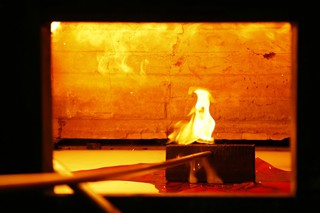
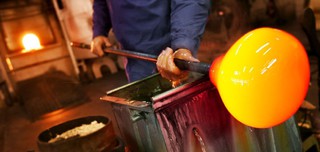
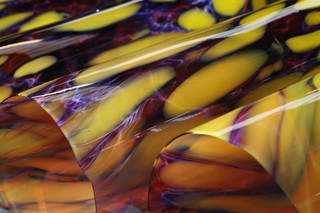
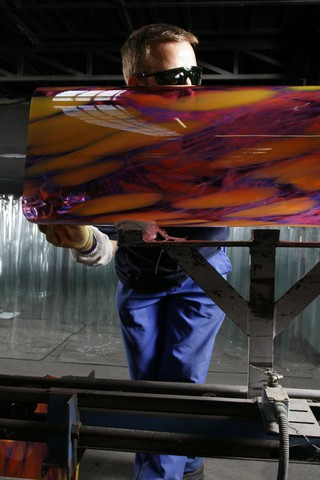
Linked files
GITII-St-Just Press Release EN (pdf)GITII-St-Just Press Release FR (pdf)

Christian Ghion

Lucile Soufflet

Jeanne gautier

Kaspar Hamacher

Pierre Lhoas

Michel Philippon

Amaury Poudray

Gwladys Alonzo

Flavie Audi

Flavie Audi (FR)
flavieaudi.com
Disturbed Edges, Cube series 03, 2012

Disturbed Edges, Circles Series 05, 2012

Disturbed Edges, Circles Series 06, 2012

Edgelessness, 2012

Aude Briet

Iveta Heinacka

Matilda KĂ€stel

GGSV- Stéphane Villard & Gaëlle gabillet
DESIGN BRIEF
THEME: âINSIDE OUTSIDEâ
The Saint-Just Glassworks has an expertise that is unique in the world. A French âLiving Heritage Companyâ (EPV), located in Saint-Just-Saint-Rambert since 1826, the Saint-Just Glassworks was originally a stained glass manufacturing plant. Since 1865 it has specialized in the production of hand-blown glass for making architectural flat glass. It has used the same technique since the 19th century.
In particular, the company produces colored glass for most of the stained glass window shops working in heritage restoration. It also supplies clear double-paned windows for historical monuments, thus allying traditional techniques with modern performance. By producing artisanal flat glass from hand-blown glass, the three-dimensional object is transformed into a two-dimensional material ideal for architectural applications. During the workshop, the usual process of transforming the material into an object is reversed: the object becomes the material. The glass thus becomes a material that takes shapes as an object to create a micro-architecture that can be placed inside or outside, at home or in the urban space. With the glass blown and drawn at Saint-Just Glassworks, all possibilities are open to the creativity of the designers and architects.
The designers will work in pairs with the students.
WHEN? 7 - 11 July
WHERE? [CIAV] Centre International d'Art Verrier (FR)
Since 1704, Meisenthal Glassworks have been
located in the North of the Vosges, East of
France. Between 1867 and 1894, Meisenthal
was coupled to the fantastic creative work done
by Émile Gallé, head of the Nancy School. The
factory which employed 650 employees and
produced millions of daily use objects closed its
doors in 1969, while keeping alive in a museum
the heritage of this disappeared handicraft
adventure.
In 1992, on the remains of the Meisenthal glass
manufacture which was very close to the Glass
Museum, a first glass fornace has been reopened.
The International Centre of Glass Art â Le
Centre International dâArt Verrier [CIAV] of
Meisenthal was born.
The preservation of popular traditions and
the collection of the material and immaterial
memory of glass full of potential life have
become an essential mission to the [CIAV] of
Meisenthal. Without nostalgy, the approach
has been to keep a glass culture alive by bridging
it with the future. The [CIAV], developed
as an interface structure, crosses tradition and
innovation, confronts a culture of heritage to
contemporary themes. Creativity and industrial
processes are applied to research projects,
exhibitions, creation and product edition. This
coherent and rich approach translates the
high potential which is brought by traditional
crafts to the contemporary eclosion of glass
design perceived as a dream of modernity and
renewal.
www.ciav-meisenthal.fr
Linked files
GITII-CIAV Press Release EN (pdf) (pdf)GITII-CIAV Press Release FR (pdf) (pdf)

Sema Topaloglu

Christophe Genard

Studio Monsieur: Manon Leblanc & Romain Diroux

Studio Monsieur: Manon Leblanc & Romain Diroux (FR)
www.studiomonsieur.com
credit: Fabrice Schneider for Hors Pistes



credit: Fabrice Schneider pour Hors Pistes


Adrien Rovero

Norayr Khachatryan

Mark Braun

Mark Braun (DE)
www.markbraun.org
© Andreas Schimanski

© Andreas Schimanski

© Andreas Schimanski

© Andreas Schimanski

© Andreas Schimanski

Pawel Grobelny

Pawel Grobelny (PL)
pawelgrobelny.com
Form

SUR LE FIL

RECTO-VERSO with French ceramist Claude Aiello, 2012

OUT-DOOR-KINO
© photo: Michiel De Cleene
DESIGN BRIEF
THEME: âSILENT LUXURY, GLASS DESIGN FOR EVERYONEâ
Is the luxury market the only way to safeguard the arts applied in design-led crafts?
In contrast to mass production, which results in low-cost items for a global market, must the design-led crafts automatically adopt an inverse position and create only objects sold at unreasonably high prices? On the contrary, at CIAV Meisenthal we believe that the challenge must be to create design for everyone, invoking the magic of place and secular know-how. While there are no constraints for designing expensive objects â for galleries and collectors -, it is much harder to imagine high quality glass objects sold at prices that are accessible to a larger audience. This will be the theme of the Meisenthal workshop : to imagine in situ, within the heart of a factory being reborn, objects that are ingenious, attractive and innovative, by optimising or revisiting the processes and tools of traditional production that have been made available. Simply âdesignâ, but without excluding the history of the site, and the beauty of the movements and rituals of the glassmaker. And including as well the vision and creativity of the designers, combined with the knowledge and artisanal crafts techniques that fall within the experimentation process of CIAV Meisenthal.
Professional workshop at ŞIŞECAM Handmade Glass Factory, Denizli, TR
WHEN? 18-24 October, 2014
WHERE? ŞIŞECAM Handmade Glass Factory, Denizli
PARTNER? ŞIŞECAM Group and NUDE
Linked files
GITII-Denizli Press Release EN (pdf)GIT meets Nude Exhibition Invitation (pdf)

Studio Rygalik: Tomek & Gosia Rygalik

Studio Rygalik: Tomek & Gosia Rygalik (PL)
www.studiorygalik.com
Genotyp
© Studio Rygalik

K1 chair
© Studio Rygalik

NASZ aperitivo: Studio Rygalik fot Ernest Winczyk
© Studio Rygalik

Benjamin Hubert

Benjamin Hubert (GB)
www.benjaminhubert.co.uk
© Benjamin Hubert

© Benjamin Hubert

Net for Moroso
© Benjamin Hubert

Adrien Rovero

Autoban: Seyhan Ăzdemir & Sefer Cağlar

Autoban: Seyhan Ăzdemir & Sefer Cağlar (TR)
www.autoban212.com
Heydar Aliyev Internation airport
© AUTOBAN

Savoy Ulus
© AUTOBAN

Gaspar
© AUTOBAN

Nest Black
© AUTOBAN

Nopa
© AUTOBAN

Tomas Kral

Tomas Kral (CH)
www.tomaskral.ch
Anemone lamp
© Tomas Kral

Plug collection
© Tomas Kral

Reused History collection
© Tomas Kral

Upgrade collection
© Tomas Kral

Nigel Coates

Nigel Coates (GB)
www.nigelcoates.com
Carrty Artids vases
© Nigel Coates

Tiger Lilly
© Nigel Coates

The Body Zone Millennium Dome
© Nigel Coates

Tamer Nakisci

Tamer Nakisci (TR)
www.tamernakisci.com
Relax tableware for Savarona
© Tamer Nakisci

Cube for Kale
© Tamer Nakisci

Dots for Kale
© Tamer Nakisci

Dots (in application) for Kale
© Tamer Nakisci

Vincent Breed

Vincent Breed (FR)
www.vincent-breed.com
Aquarium "Echapée" for Sebastien Cordoleani

FECOND
© Erick Saillet

Infinity Pan" for Rirkrit Tiravanija

Prototype perfum bottle "L'Homme" by Jean Nouvel for Yves Saint Laurent

Marika Kinnunen

Clément Le Mener

Clément Le Mener (FR)
www.concepteur-createur.com/clement_le_mener
Pearl designed by Pierre Favresse

Vase - Clément Le Mener

Morning Mist designed by Benjamin Graindorge (edition Ymer&Malta)

Cristal Cane designed by Benjamin Graindorge (edition Ymer&Malta)
Postgraduate workshop at the Royal College of Art in London, UK
The participants are students from schools with glass department (Bachelor/Master/Postgraduate levels).
We have the pleasure to collaborate with: Konstfack, HEAR: Haute Ecole des Arts du Rhin, Gerrit Rietveld Academie, University of Edinburgh, The Academy of Arts, Architecture and Design in Prague (AAAD), The Royal Danish Academy of Fine Arts, University of Sunderland and Aalto University in Finland.
Tutoring by Simon Moore and Liam Reeves
WHEN? 23-27 March, 2015
WHERE? Kensington Gore, London, UK
PARTNER? The Royal College of Art and Vessel Gallery
ROYAL COLLEGE OF ART (UK)
What is now the Royal College of Art began life in 1837 as the Government School of Design. Founded to make the training of designers for industry a national responsibility, the institution changed direction after the Great Exhibition in 1851 to become the National Art Training School in 1863, with an emphasis on fine art. In 1896 it became what we now recognise as the Royal College of Art, with an emphasis on both art and craft.
Vessel Gallery is based in Notting Hill, London and was
founded in 1999 to represent British and international,
emerging and established, contemporary glass artists.
All pieces have been carefully edited to show an
unparalleled selection of contemporary design and craft.
In addition to our represented and permanent artists
and brands is âVessel Editionsâ, exclusive editions of
decorative artworks and lighting solutions for collectors,
architects and interior designers created in collaboration
with studio glass artists, mostly handcrafted in the UK.
Vessel also consults for interior and corporate projects,
providing the opportunity to have a truly bespoke service
with unique works created in dialogue with the client.
The gallery is a valuable resource for artists, museums
and collectors. Numerous artworks have entered
prestigious public collections as a direct result of the
Galleryâs exhibitions and advocacy.
Linked files
Press Release (pdf)
Gemma Leamy

Ulrika Barr

Nathan Favot

Galla Theodosis

Helena Todd

George Bell

Liisa Poskiparta

Erin Elizabeth Dickson

Simon Moore

Liam Reeves
In the case of lamp working, it may be that you start with several components and later fuse together.
So you are being asked to create one blown or lamp worked object that is then cut up to produce several other objects, or to re arrange the original object using every part that has been shaped.
To answer this, seemingly simple brief, you will really need to fire up all your creativity.
Contact
Pro Materia
lise@promateria.be
rue Notre-Dame-du-Sommeil 2
B-1000 Brussels
+32 (0)2 768 25 10
contact@glassistomorrow.eu
Linked files
SIXTH SESSION OF WORKSHOPS - Press release (pdf)GIT II Touring exhibition (pdf)
About
Glass is Tomorrow EU Project

In its second phase which has started up on 1st June 2013 and will last until 31 May 2015, GLASS IS TOMORROW â GIT II will aim at collaborating further with high end glass centers and postgraduate education departments specialized into glass design, in order to increase the quality of the glass production in Europe and the awareness of the European glass culture, tradition and innovations towards the professional world and the general public (including the applied arts and design collectors). The evolution of the project will enhance both the pedagogy and the profession of glass design and making.
There will be 2 professional production residencies at the partnersâ glass factories (The Glass Factory in Boda â SE and the CIAV in Meisenthal â FR), wich will be organized parallel to a series of 3 postgraduate workshops along with specialized schools âdepartments glass and ceramics) and glass research centers (ESADSE - School of High Education in Art and Design of Saint-Etienne, Royal College of Arts â RCA in London, and CIRECA/Domaine de Boisbuchet with the Corning Glass Museum/âGlass Labâ from New York City, US).
Discover GIT Workshop in Novy Bor, Feb 2012
Video by James Bort, www.jamesbort.com
Workshop Glass is Tomorrow
Novy Bor, Czech Republic
Theme: Silvering: Silvered glass (also known as Mercury Glass) is double‐walled glass with a silver
coating inside the walls. The silvering liquid is poured into the space between the walls of the glass vessel through an opening, it adheres to the glass wall creating an opaque mirrored surface. The residue is drained off, the inside dried, and some form of seal placed over the opening.
Glass Blowers
Jeremy Wintrebert & Antoine Brodin (FR), www.jeremyglass.com
Matteo Gonet (CH), www.mattegonet.com
Sébastien Maurer & Jean Marc Schilt (FR),
Sara Hulkkonen (FI), www.studiosara.fi
Rea Moiso (FI), www.iittala.com
RĂłisĂn de Buitléar (IRL), www.roisindebuitlear.com
Martin Ć těpĂĄnek (CZ)
Designers
Arik Levy (FR), www.ariklevy.fr
Maxim VelčovskĂœ (CZ), www.lasvit.com
Pierre Favresse (FR), www.pierrefavresse.com, www.habitat.com
Dagmar PĂĄnkovĂĄ & LeoĆĄ Smejkal (CZ)
KlĂĄra HorĂĄčkovĂĄ (CZ)
Wing Lam Kwok (HK/B), www.winglamkwok.com
Mendel Heit (DE), www.mendelheit.com
Rony Plesl (CZ), www.ronyplesl.com
Sébastien Geissert & Pierre Bindreiff (FR),
Discover GIT Workshop in NuutajÀrvi, Sept 2011
Video by James Bort, www.jamesbort.com
Workshop Glass is Tomorrow
NuutajÀrvi, Czech Finland
Theme: Stackability:
"Stack-able" is a combination of words that was born in the 1960's with the evolution of furniture design and domestic use in the home. Stackable is the specific context of GIT, can have several meanings:
- Being "stacked', like chairs, but applied to glass elements that may be glassware, tableware or utilitarian objects for everyday life.
- Designing and/or glassblowing a product that can be stored and transported as efficiently as possible without damage.
- Being efficient and/or effective in the production process of the glassware by staking elements on one another: add-ons in shape, in function or in colors, introduced at different moments in the glassblowing process.
Glass Blowers
Jeremy Wintrebert & Antoine Brodin (FR), www.jeremyglass.com
Matteo Gonet (CH), www.mattegonet.com
Designers
Alfredo HĂ€berli (CH) www.alfredo-haeberli.com
Lucie Koldova (CZ) www.lucikoldova.com
Cecilie Manz (DK) www.ceciliemanz.com
Rony Plesl (CZ) www.ronyplesl.com
Tadeas Podracky (CZ)
Hubert Verstraeten (BE) www.tamawa.be
Heikki Viinikainen (FI) www.studioviinikainen.com
Pro Materia, Brussel (BE)

Pro Materia is a Creative Design Consultancy Agency launched in 1999 as a non profit organization. It is for years recognized as a platform and incubator of existing and emerging talents in design and contemporary crafts in Belgium and abroad. With more than 12 years of experience in this field of promoting creative industries, Pro Materia/Lise Coirier has also acted as an international curator and author in the field of contemporary design.
Vessel Gallery, London (UK)

Vessel is a store-cum-gallery based in Notting Hill, London. We aim to be a modern Mecca for all those who appreciate good design & beauty in their life, both to look at and to use. The best contemporary glass and ceramic pieces available have been sourced globally. Here you can view a taster selection of our ranges which cover iconic Scandinavian functional design, (Hackman, Stelton, Iittala, Orrefors, Arabia), flamboyant, collectible Italian art glass (Venini, Salviati, Arcade), plus the best of home grown talent.
The Glass Factory, Boda (SE)

In the 1960s and 70s Boda teamed up with life and creativity. This was the place where Boda Smithy, Boda Wood and Boda Nova were founded.
In 2009 the Municipality of Emmaboda secured the extensive historical glass collections from Boda, Kosta and Ă fors glassworks. Boda, where such great creativity has flourished, is the location of The Glass Factory â one of Scandinaviaâs largest glass museums. The Glass Factory is an experience-based, interactive glass museum with a quality-assured operation located in the heart of the Kingdom of Crystal.
The museum serves as a knowledge centre and creative meeting place for artists, designers and visitors.
Centre International d'Art Verrier [CIAV], Meisenthal (FR)

A LABORATORY FOR CONTEMPORARY DESIGN
prototypes for industrial application, research work for designers, artistsâ residence, seminars for art college students (accommodation)âŠ
A PUBLISHING HOUSE FOR LIMITED EDITIONS
manufacturer of historical, contemporary and âjeunes pousses de verreâ (âyoung shootsâ) editions, unique pieces and trophies...
AN EDUCATIONAL WORKSHOP
glasswork demonstrations complement the glass museum visit, contemporary glass artwork exhibitions, glassblowing for adults, discovery days and courses for the youngâŠ
HANDING DOWN THE TRADITIONS
knowledge transfer sessions with experienced glassblowers, resurrection of old production techniques, preservation of old moulds, editionsâŠ
Domaine de Boisbuchet (FR)

Le Domaine de Boisbuchet was first mentioned in documents dating from the the 16th century, it was long the largest country estate in the area, last in the possession of the Counts of Le Camus. In 1986, the furniture collector and culture manager Alexander von Vegesack purchased the estate, to bring it to new life for agricultural and cultural purposes.
Together with friends and Eastern European universities, the buildings were renovated and agricultural operations were reactivated. In 1996, the organisation CIRECA (Centre International de Recherche et dâEducation Culturelle et Agricole) was founded, which has since put on a series of international workshops in the summer months on architecture and design themes.
RCA - Royal College of Art, London (UK)

ESADSE - Ăcole SupĂ©rieure d'Art et Design de Saint-Ătienne (FR)

Lâécole supérieure dâart et design de Saint-Etienne (ESADSE) , fait partie des 46 écoles supérieures dâart françaises sous tutelle pédagogique du MinistĂšre de la Culture et de la Communication. Lâécole a pour vocation de former des artistes, des designers, des graphistes, des auteurs, des créateurs. Elle met en avant la pratique, lâexpérimentation et le projet personnel de lâélĂšve grĂące Ă un encadrement par des professionnels de haut niveau. Ainsi LâESADSE offre un type de formation sans équivalent dans le champ de lâenseignement supérieur avec deux options majeures : art et design. Lâécole propose également un post diplĂŽme design et recherche niveau 3Ăšme cycle qui publie la revue de design AZMUTS depuis 1991.
GrĂące Ă une politique dâéchanges dâétudiants, dâartistes, de designers, de workshops, et de développement des réseaux, elle a créé en 1998 la Biennale Internationale Design Saint-Etienne et a fait émerger la Cité du design. LâESADSE a su tisser un réseau de partenariats locaux et internationaux qui nourrissent sa pédagogie et son rayonnement international.
LâÉcole supérieure dâart et design de Saint-Étienne et La Cité du design se rejoignent depuis 2005 dans une mĂȘme structure autour dâun objectif commun : développer la recherche par la création. Depuis janvier 2010, elles sont réunies dans un établissement Public de Coopération Culturelle (EPCC)
Discover GIT Workshop in Meisenthal, July 2012
Exhibition-Publication
Publication & Exhibition

You can download our press overview and clippings on the Glass is Tomorrow project 2013-2015.
GLASS IS TOMORROW BOOK is now out.
Co-published by Pro Materia & ArchiBooks, sldd. Lise Coirier & Adrian Madlener, format: 21 x 28 cm, 280 pages, full color, more than 500 exclusive photographs by James Bort, Anne Zed / Geophotography, MĂŒfit Ăırpanlı & BĂŒşra Yeltekin. 39 € (+shipping cost)
To place your order, please write to: book@glassistomorrow.eu
Glass is Tomorrow II - Touring exhibition
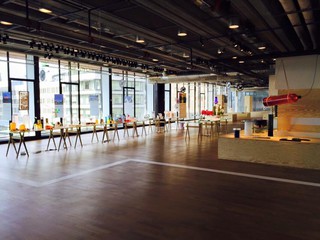
June 17 - August 23, 2015
Nationalmuseum Design
Kulturhuset Stadsteatern, Sergels torg, Stockholm, Sweden
www.nationalmuseum.se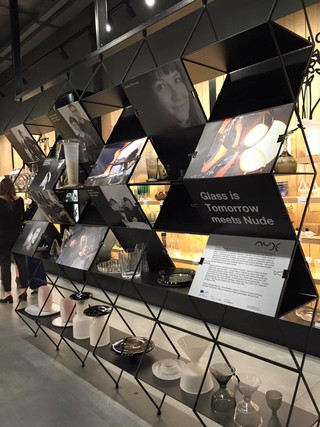
April 13 - 19, 2015
Glass is Tomorrow meets Nude
Paşabahçe Store
Corso Matteotti 3, Milan, Italy
www.nudeglass.com
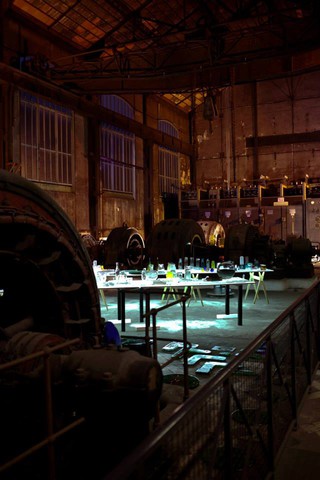
March 12 - April 10, 2015
Musée de la Mine, salle de lâÉnergie
3 Boulevard Franchet dâEsperey
F- 42000 Saint-Étienne, France
Press preview: March 12, 2015 - 15:00 to 17:30
Opening:March 14, 2015 from 18:00
www.musee-mine.saint-etienne.fr
Biennale Internationale Design Saint-Etienne
www.biennale-design.com
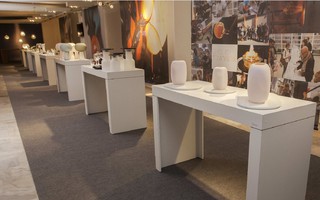
November 1 - December 14, 2014
During Istanbul Design Biennial
Glass is Tomorrow meets Nude
Meşrutiyet Cad. No:99/1 34430 Tepebaşı, İstanbul Beyoğlu, Turkey
www.nudeglass.com
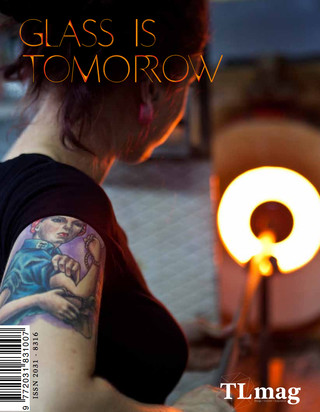
Linked files
Glass is Tomorrow I publication (pdf)GIT at Nationalmuseum exhibition (pdf)
GIT Touring Exhibition information (pdf)




























































































































